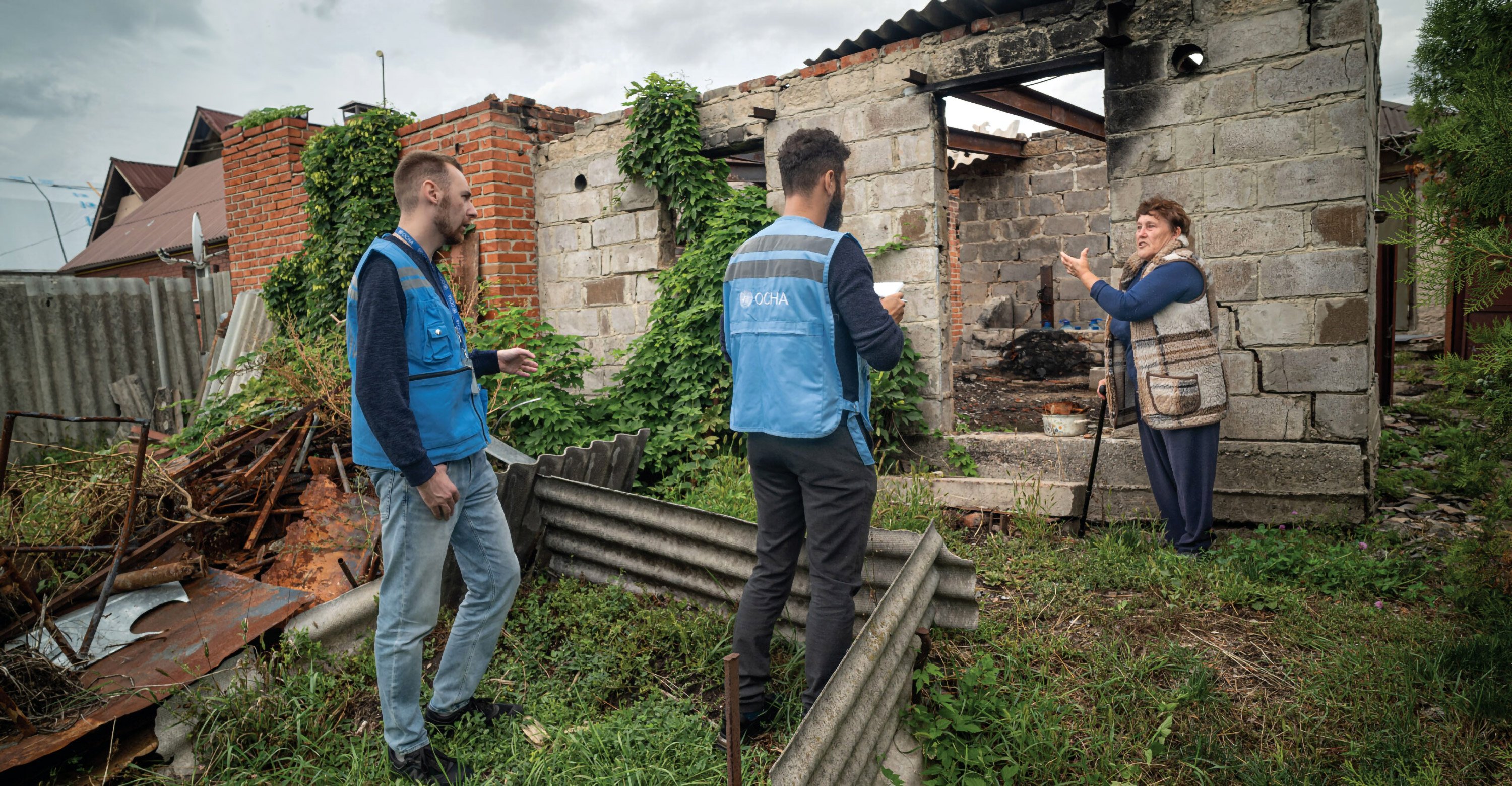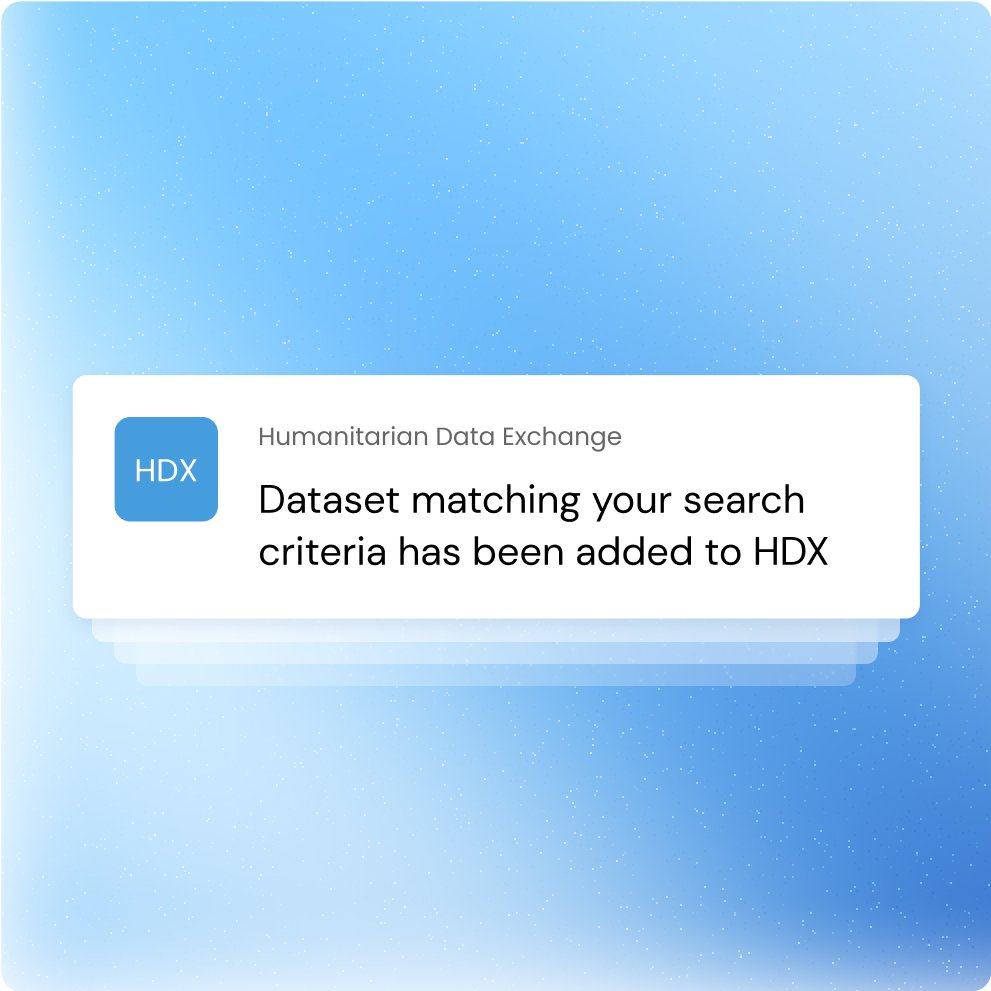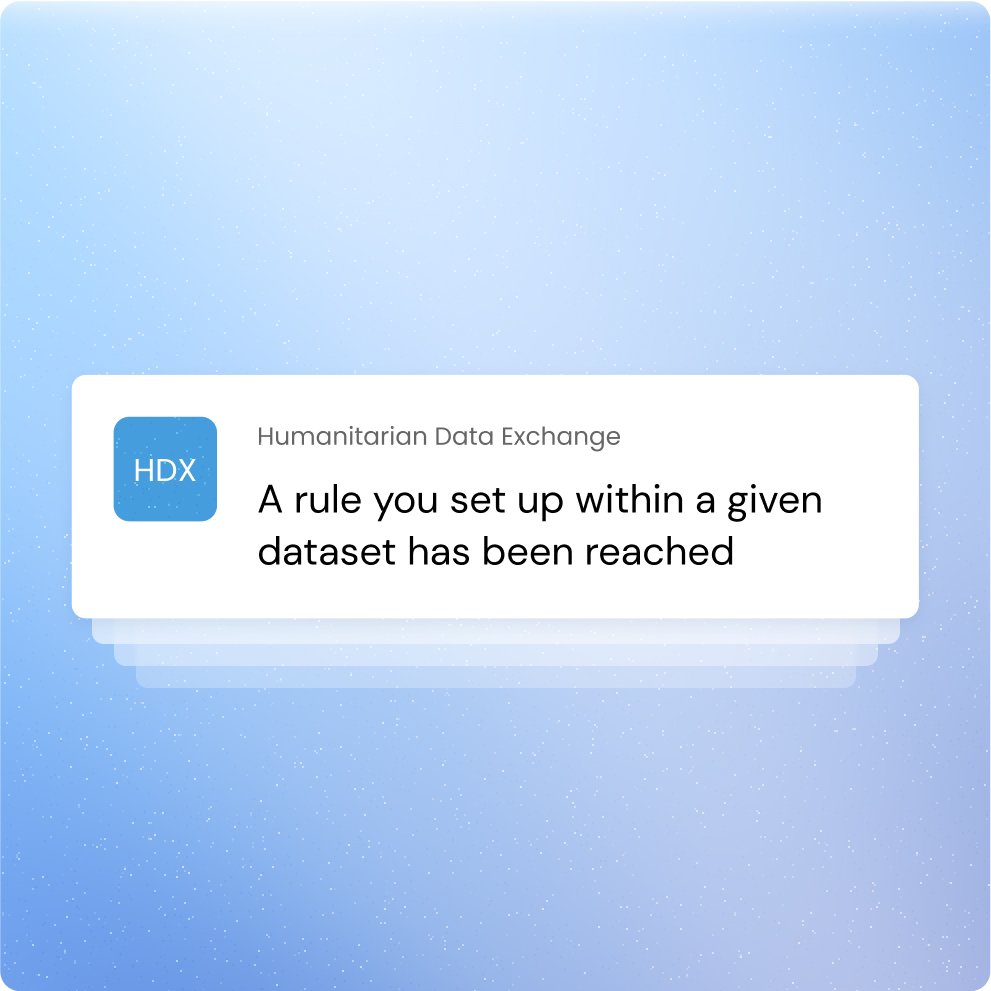UN OCHA
Roadmapping a new notification system for the Humanitarian Data Exchange

Raisa Kuzminichna Bielokon, 76, tells OCHA Ukraine’s Saviano Abreu and Sergei Korzhov that she is grateful to non-governmental organizations for delivering essential supplies to her door in Ukraine's Kharkiv region.
Credit: OCHA/Matteo Minasi
Global data, local action
Global upheaval and the resulting humanitarian crises are sadly a fixture in our world today. As a B Corp with a history of creating category-defining digital products, ustwo is always ready to use our skills to help improve the world around us.
Each year, around 1.4m people from 230 countries and territories rely on the open-access Humanitarian Data Exchange (HDX) platform to share, analyse and access the information needed to address the most pressing humanitarian crises worldwide. Demand for HDX’s data is on the rise, with a 25% year-over-year increase in the number of datasets downloaded in 2023.
In October 2023, we proactively approached UN OCHA (United Nations Office for the Coordination of Humanitarian Affairs) - the organisation which manages HDX through its Centre for Humanitarian Data - and offered our services pro bono. We agreed to support research on notifications for the HDX site, a priority in their product roadmap.
We are grateful for ustwo’s pro bono support in helping us think through options for notifications. Their team quickly got up to speed with humanitarian data and how HDX works. They brought a useful outside perspective and made helpful recommendations about how we should be thinking about the user experience of notifications and the technology we should consider. We were impressed with the amount of work they were able to complete in just four weeks and hope that we can work with them again as we make progress on the next stages of our roadmap.
What we did
We immediately kicked off a four-week ustwo discover project - a process designed to imagine new products, experiences, services or business models. Working closely with the HDX team, it became clear that if we could improve the way the right data gets to the right people, the new notifications system could support faster insight and, ultimately, a better response to support people experiencing humanitarian crises. ustwo committed to delivering an actionable, high-level technical roadmap for an HDX notification system.
Data e.g. demographic data and location data, is sourced through verified organisations
Datasets are then uploaded and downloaded from the Humanitarian Data Exchange (HDX)
Datasets are found and curated into data products like charts, graphics, maps and analytics
The larger humanitarian community can use the data for decision making, funding and coordination efforts

An agile transformation
The HDX team was experiencing challenges in information awareness because of the volume of data being shared on the platform by over 200 organisations covering every active humanitarian crisis around the globe.
The existing notification model was a “pull” model that required the user to actively follow data sets through visits to the HDX website, social media posts and a newsletter. The team wanted to move to a “push” model for notifications that would make it easier for users to get the data they need as soon as it has been shared or updated. To succeed, it was critical for us to get a clearer picture of their audience, so we immediately set about building out user personas.
Understanding HDX users
The humanitarian sector is a complex landscape with its own unique challenges. “When someone says ‘I need this to be delivered to this person yesterday’, they’re not exaggerating,” says ustwo Product Principal Alice Piterova, whose empathy for end users was informed by her experience in the humanitarian sector, including volunteering at a refugee camp in Calais, France.
With HDX, we hypothesised that the target users for the notifications functionality are Information Management Officers, who develop analytical outputs to support operational response. They are often embedded in the countries where OCHA has operations. Given that many of these users are focused on responding to humanitarian crises, it was challenging to find time to speak with all user types. So, in addition to headquarters-based desk officers, we interviewed proxies to understand the needs of field workers.
We used these interviews to define three main persona prototypes: “Constructors” (who collect, process and update data); “Curators” (who turn data into actionable insights); and “Storytellers” (who monitor situations and gather data into narratives to help inform decision-making). As ever, this was a crucial element in developing our thinking.
Constructors are responsible for collecting, making available and processing crisis data and ensuring it stays relevant.
Curators are responsible for translating data into actionable insights, the information they convey and the people that need them.
Storytellers monitor situations, aggregating data from multiples sources to help them paint a picture of what’s going on in order to inform decision making.

Framework for a path forward
We needed to devise a notification system roadmap that could fit into HDX’s existing open-source software infrastructure without creating new challenges within a tight project timeframe.
Using our research and the three personas, we mapped out user flows for each persona to understand how they would use the notification system and what they needed from it during emerging and ongoing crises. We then delivered a high-level plan to make use of the types of tools that can improve notifications, including the use of different channels, customisations and integrations alongside tech recommendations such as crucial additions to the HDX stack.
Notifications that help Constructors so they can make crisis data available and usable ASAP

Notifications that help Curators so they can reliably translate data into usable information

Notifications that help Storytellers so they can use crisis data to inform logistical and funding decision making

Our recommendation for the notification system is to have highly customisable settings controlling which notifications a user receives, how they receive them (e.g., email, push notifications) and at what intervals - all of it designed to increase maximum efficiency in the most challenging circumstances.
“With something so serious and important, we wanted to be very thoughtful and do as much as we could to add value in a limited timeframe,” says Yvonne Romano, the project’s design lead.
Aware of the urgency of OCHA’s needs, we ensured that the notification roadmap was agile enough to implement quickly but also included potential features and capabilities that could be developed in the future.
The team has subsequently picked up the insights from the work and continued to explore the options for notification functionality through a further discovery process.
Reflections
Our work was continually inspired by our clients at OCHA who are driven by the purpose and impact of the work. Their deep knowledge, care and understanding of the humanitarian sector proved invaluable throughout the design process.
This project was a welcome reminder that we cannot afford to approach everything from a designer-as-hero mindset; humility and openness are crucial in the process, particularly in this sector. We quickly realised that, despite our extensive design and tech experience, the clients ultimately knew the overarching needs and situation best, and had logistical and organisational challenges that are hard to appreciate when you haven’t lived them. It showed us once more that approaching meaningful design work from a place of empathy is key to success.